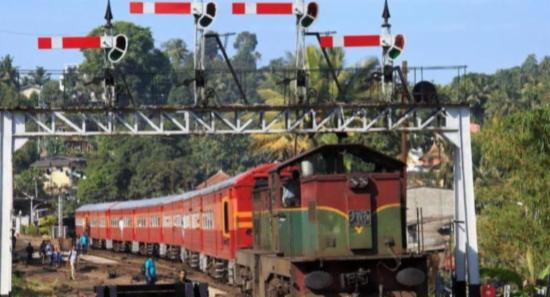.webp)
Sena, a threat to cultivations across the country
Colombo (News1st) - The Sena caterpillar that has wreaked havoc among many farmlands is at risk of spreading throughout the country. This species of caterpillar has already destroyed more than 50% of the 80,000 hectares of corn cultivation across the island.
The Sena caterpillar was first discovered last October, in a cornfield in the Ampara district, and has since spread to the Monaragala, Kurunegala, and Anuradhapura districts, as well as to the Galle and Matara districts.
According to our information corn crops in many areas including the Siyambalanduwa, Mahakalugolla, Athimale, Kotiyagala, and Kaluobba are currently under attack by the Sena caterpillar. After farming with so many debts the farmers are now losing their crops to these insects. The devastated farmers state that even though insecticides were sprayed it all goes in vain.
Farmers in Monaragala who earn a living through farming, state that they will have to commit suicide along with their children if this continues. Our tour around the Galle and Matara districts revealed that the Sena Caterpillar devours other types of crops, such as mung, millet, and wheat as well.
The head of the Agriculture Department's Research Division on the Sena Caterpillar, Anura Wijethunga revealed that this caterpillar is capable of devouring more than 100 plant species including corn. He noted that the pest is a threat to food production all over the country.
The caterpillar that is native to America, was later detected in Africa, several years ago. After destroying crops across Africa, this caterpillar species made its way to India, during the first half of last year. It is believed that the Sena Caterpillar spread to Sri Lanka from our immediate neighbour, India.
The colour of the Sena caterpillar varies between green and brown. The caterpillar has four spots on the abdomen, which forms the shape of a square. Agronomists say that the moth that is formed through this caterpillar species, can fly hundreds of kilometres on prevailing winds. Even to date, countries that were affected by the Sena caterpillar species, have failed to find any solution to mitigate this issue.
Anura Wijethunge noted that as there is no other predator species for the Sena caterpillar in the country, it is possible that this insect might affect the paddy season. He noted that when harvesting, it is important to remove parts of the plant that has been attacked by the caterpillar, failure to do so, it means that the Sena caterpillar will be carried forward to the next season as well.
In a bid to solve this massive epidemic our country's agriculture sector is currently facing, News1st initiated yet another national project. Three special research groups along with the faculty of agriculture of the University of Peradeniya were dispatched to the Monaragala, Ampara, and Anuradhapura districts.
With the support of the University of Peradeniya, News1st will tour around the areas affected by this caterpillar species and will conduct an in-depth analysis into this matter.
Other Articles
Featured News





.png )
-816536_550x300.jpg)
-816530_550x300.jpg)
-816524_550x300.jpg)

-816512_550x300.jpg)
-816506_550x300.jpg)





-812087_550x300.jpg)
-810262_550x300.jpg)
-809496_550x300.jpg)

















.gif)